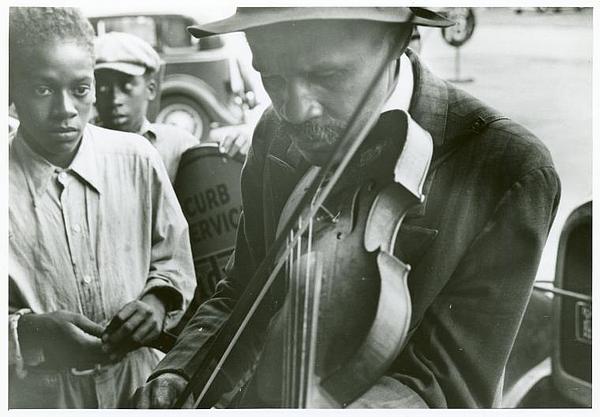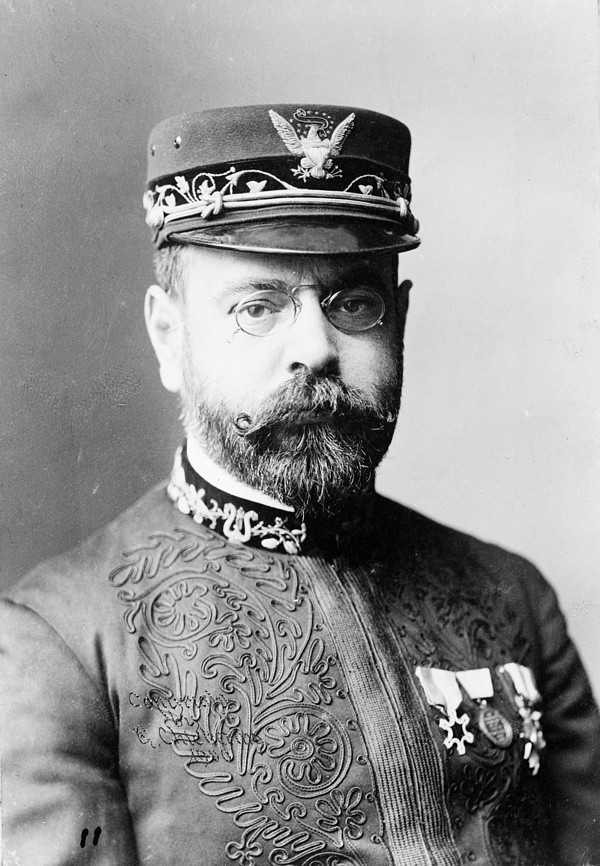The Music & The Theory: An Introduction To Your Place In Musical Culture
Imagine a world without a record player. A world without recording studios, or record labels, a world without even radio to play us the music that we’d like to hear. Imagine such a world.
Is that world depressing, or is it empowering?
…
In such a world, a scant 100 years ago, you’d hit up the local stage to listen to the old songs or the songs of the day, played by locals or traveling performers. If, however, you were at home with the family for a holiday and you wanted to hear “House Carpenter” or “In The Highways” or, heaven forbid, a song that glorified the gangster lifestyle like that song “John Hardy,” you’d pick up the accordion, the violin, the guitar, and you and your family would play. That’s how we heard the music we wanted to hear: We played it ourselves. We were participants in musical culture.

Back then you didn’t have to read sheet music to play the songs, but it helped. You could learn the tune from a friend of yours, and if you forgot a part while playing it later on, well, you’d just add something in its place, a bit from another song, maybe, and you didn’t worry about messing it up, because your version was just as valid and just as real as everyone else’s. There was no truly definitive version of any song.
How different that is from our world.
In 1906, the composer John Philip Sousa had a few things to say about “talking machines,” or record players. To congress, he argued this:
“These talking machines are going to ruin the artistic development of music in this country. When I was a boy… in front of every house in the summer evenings, you would find young people together singing the songs of the day or old songs. Today you hear these infernal machines going night and day. We will not have a vocal cord left. The vocal cord will be eliminated by a process of evolution, as was the tail of man when he came from the ape.”

Now, clearly, we haven’t lost our ability to sing, but we’ve stopped thinking of ourselves as musical creatures, as participants. We think of “musicians” as the people on the stage with the big lights and the big sound, the rock stars and the pop divas, and if we don’t want to be on that stage, well, then, what’s the point of playing music?
This is a tragic mindset. This way of thinking has caused the waste of talent for many great musicians who do not think of themselves as such because their definition of “musician” is limited. So many consider musicianship to be strictly a profession, but that’s not the case at all. If you sing in the shower, if you jam with your friends or play quietly in your room, you are a musician. You are allowed to give yourself that title alongside the many others like parent, doctor, machinist, community organizer, friend.
Another strange notion I’ve come across is that many people don’t consider themselves musicians because they haven’t studied Music Theory. This strikes me as strange because everyone learns about the way music works simply by living. We are born into a world full of music, with brains equipped to enjoy certain sounds, and to dislike others. We’re born into this world and then we are raised in a culture of music to appreciate certain cultural ideas of song. If you enjoy music in any way, that enjoyment means that you already understand many of the basic principles of music theory; you understand them in a kinesthetic and instinctual way. All we have to do is wrap the conscious part of our brains around something our bodies already know.
What I’m going to do with this series of articles is to set the record straight, if you’ll pardon the pun, about Music Theory: what it is, what it does, and how you can use it as a non-music student, as a non-rock star, just as a normal human being, to make your community a more wonderful place to exist.
But first of all, what is this thing called “Music Theory?”
Music Theory is a broad term encompassing many studies, but above all, it is a way to communicate. As I said before, most of us already understand a lot about what makes music tick, but we express it through dance, or through our love of one song and dislike of another. If you are jamming with a friend, though, how does one communicate these bodily ideas to another musician? You learn the common language. You learn a little bit of Music Theory.
For example: you want to learn an old folk song, like “The House Of The Rising Sun,” “Saint James Infirmary,” or “Papa Don’t Preach.” The first thing you’d want to figure out is what key it’s in. The key tells you what note or chord you’ll probably start on, what notes will sound satisfying in the song, and it will also tell you what chords you’ll need to play to support those notes. Now, you can actually change the key of a song if you like, but that’s a story for another time.
How does one know what notes are contained in each key? What does it mean to play in the key of B-flat major or A-minor? This is a complicated subject, but what it comes down to is this: In all of western music (Europe, America, and their constituents), there are just twelve notes or tones. When we choose a key, what we are doing is choosing just seven of those notes to include in our song, and we are choosing the order in which we play them. If the key is C, that means that the note you’re gonna start on is probably C, and in all likelihood, that’s where you’ll end, too. Of course, there are exceptions, and there are many times when the rules are broken, but this is a good way to think about it, at the beginning.
Which notes are sung and in what order also decide whether a key is major or minor. Major keys are the most common. Most national anthems and pop songs are in major keys, because those are the keys with the most satisfying resolutions. Perfect examples: “American Pie” by Don McLean, “Born This Way” by Lady Gaga, or “I Would Do Anything For Love” by Meatloaf, or the hymn, “I’ll Fly Away.” The last notes just slide into place, like a puzzle piece.

Minor keys sound a little sadder; they don’t resolve as definitively as major keys, and minor keys have been known to sound menacing. Think about “Enter Sandman” by Metallica, or “Before He Cheats” by Carrie Underwood. There’s “Why Don’t You Do Right,” the old blues song made famous by Jessica Rabbit, and let’s not forget “God’s Away on Business” by Tom Waits. Very different styles, yes, but they are all linked by something deeper: They’re all songs in minor.
After you find out the key, you’ll need to learn what kind of rhythm the song has. Is it a waltz or a shuffle? Is it ragtime or jitterbug? Disco or tango? Each of these rhythms are distinguished from another by how many beats (think of how you’d clap to each song) are in a phrase of music (a unit of the song that gets repeated), and what beats are emphasized over others; There’s a huge difference between stomping on the first beat and clapping on the first beat. The only way you’re going to understand rhythm, though, is if you experiment and play around with it and observe it in the wild and saturate yourself with it. Closely observing and mimicking the music you listen to will help you more than any book, instructional video or article by wooly Seattle musicians on a Steampunk website.
Once you’ve figured out the key and the rhythm, maybe you’ve found yourself a chord chart or some tablature online, you’re in good shape to fake your way through the song.
Faking your way through, I should add, is not a bad thing. It is the second step in the process of learning. You get the basics, you fake your way through it, you mess up, you figure out what you messed up, you try again. It takes time. It takes energy. But that’s what learning looks like, and hopefully, you’ll be doing a lot of it. It’s the only way to pick up the songs that your friends and family want to hear around the campfire, or over a drink. If you enjoy creating music, learning becomes a joyful process, and it gets easier every time you do it. Your ears get quicker, your brain picks out the patterns. You start to figure out how certain pieces of the puzzle fit together. And you learn from your mistakes.
Over the next article or two, I’m gonna spread some knowledge that you’ll need to jam with friends and to play the songs that you love and maybe, maybe you’ll get the itch and write some of your own. Not necessarily because you want to be the next rock star like Wayne Coyne or Jimmie Rodgers, but maybe you and your friends like music and making music together is a happiness.
That’s what counts.
About the Author:
Aaron J. Shay is a writer and performer from Seattle, WA, who writes and records music under his own name and with the scrappy street folk trio The Mongrel Jews. When not performing music, Mr. Shay writes fantastical fiction, a few blogs about what it's like to be an ambitious performer in the online age, and the occasional, exceptional tweet. For more information, check out aaronjshay.net.